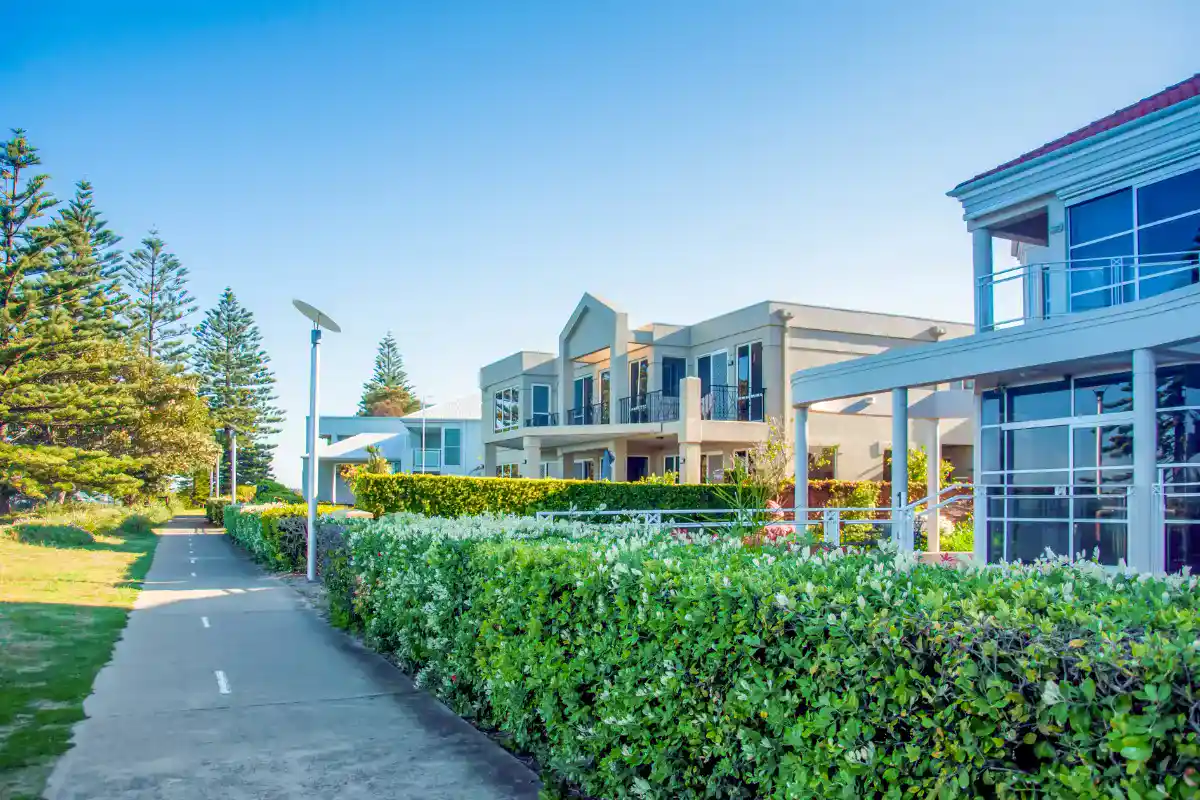
The thrill of owning your own space, the satisfaction of building a home – the dream of a first home ignites a spark within us all.
But:
This dream can be riddled with challenges – especially when saving your deposit.
The cost of living and property prices are constantly rising in today’s economy, making saving for a first home seem impossible.
Help is at hand:
As a buyers’ agent, I’m here to share five key strategies for saving for your first home that will pave the way towards realising your home-owning dreams.
Key Saving Strategies To Save For A House
Tip #1: Automating Your Savings
Forget manual transfers and impulsive spending!
The key to building your dream home deposit lies in automating your savings. It’s the “pay yourself first” principle on autopilot, where a predetermined portion of your income whisks itself away to a dedicated savings account.
No more willpower battles, just a steady stream of bricks (digital ones, of course) building your future home one transfer at a time.
For instance, if your weekly income is $1,000, decide on a percentage to save – let’s say 30%. Automatically transferring $300 to your savings account each week ensures that a significant portion of your income is saved before you’re tempted to spend it. This automated process takes the decision-making out of your hands, reducing the likelihood of deviating from your savings plan.
Utilising Automated Saving Systems
Embracing automation isn’t just about convenience; it’s about supercharging your savings with a digital co-pilot. Using an “autopilot” savings system, like what Scott Pape outlines in his book The Barefoot Investor takes the guesswork out of allocating your hard-earned cash, ensuring you’re on the fast track to your house deposit.
The benefits of automated saving systems extend far beyond convenience.
They offer discipline by removing the temptation to splurge, ensuring your savings grow consistently. They optimise your finances by adjusting savings based on spending habits, making your efforts more effective.
Additionally, they provide peace of mind as your savings progress on autopilot, allowing you to focus on life while your future home fund builds steadily.
Whether you’re a Barefoot Investor enthusiast or prefer another method, harnessing the power of automation is key to maximising your savings potential.
Tip #2: Smart Investment Choices
Okay, so your Home Fund is chugging along nicely, fueled by those automatic transfers. But what if we could give it a little turbo boost?
I’m not talking about diving headfirst into the stock market with a blindfold on. Let’s stick to safe, reliable options to get your money working without the jitters.
Here are the top contenders:
1. Term Deposits: Lock in your money for a set period, and in return, you earn higher interest than your average bank account.
2. High-Interest Savings Accounts: They offer higher interest rates than traditional accounts, but you have more flexibility to access your funds if needed.
3. Blue-Chip Shares: These are solid performers in the investment world. They might not give you the adrenaline rush of a penny stock, but their steady growth over time can be a valuable addition to your home fund arsenal.
Tip #3: Create and Stick to a Budget

Budgets.
Often met with sighs and eye rolls, they’re actually the secret sauce in the homeownership recipe. Creating a detailed budget lets you see where your money is going and identifies opportunities to channel more into savings.
Budgets aren’t about deprivation. They’re about choice and balance. You can still enjoy the little things, the occasional splurge that adds spice to life. But the key is to prioritise your long-term goals.
Start by categorising your income into essential expenses, savings, and discretionary spending. You can meet your basic needs, save for your future goals, and still enjoy life.
Tip #4: Diligent Expense Tracking
Ever feel like your money vanishes into thin air by the time you reach the end of the month?
That’s where expense tracking comes in.
This shines a light on every cent you spend, revealing hidden patterns and habits that might sabotage your savings goals.
But here’s the catch:
Tracking isn’t about guilt or punishment. It’s about accountability, awareness, and motivation.
Apps, spreadsheets, even a trusty notebook – choose your weapon and start logging your purchases. Seeing your spending laid bare can be a wake-up call but also a motivator.
Every latte skipped, and every Erina Fair shopping splurge resisted is a feather in your cap, propelling you closer to your down payment goal.
Tip #5: Eliminating High-Interest Debts
Imagine carrying your savings in a pocket with a hole; that’s what high-interest debts do to your financial health.
No matter how much you save, a portion of it seeps away in interest payments, leaving you with less to contribute to your home savings. It’s a perpetual cycle that can delay your dream of homeownership.
But you have a tool to plug those holes and reclaim control – debt repayment strategies.
Not all debt is created equal. Some, like credit card debt with its sky-high rates, demand immediate attention.
Consider consolidating multiple debts into one with a lower interest rate, making it easier to manage and pay off. Another strategy is to focus on paying more than the minimum required payment each month.
By proactively addressing high-interest debts, you’re not just freeing up more money for savings but also improving your credit score, which is vital for securing a home loan.
How Much to Save for Your First Home
When planning to buy a property, understanding your savings requirements is crucial. Two primary components to consider are the deposit and additional expenses like conveyancing, pest inspections and potentially Stamp Duty.
Generally, a deposit of the property’s value is around 10%-20 %. For instance, for a property worth $800,000, you would need approximately $80,000-$160,000 deposit. If you don’t want to avoid paying the Lenders Mortgage Insurance (LMI), you would typically need a 20% deposit.
In addition to the deposit, you should also account for extra costs. These can include conveyancing fees, building and pest inspections, stamp duty and possibly loan application fees. These expenses typically amount to approximately 5% of the property’s value. So, for an $800,000 property, this would be an additional $40,000.
Therefore, for an $800,000 property, you’d aim to save around $120,000, combining the deposit and additional expenses.
But wait, there’s more good news for first-time buyers!
Government grants and stamp duty concessions can help you slash your savings requirements. For the $800,000 property, you can save an additional $31,090.
Disclaimer: Always check official websites and consult with financial advisors or accountants for the latest information and specific guidance, as requirements and benefits can vary based on location and individual circumstances.
Conclusion
Adopting efficient saving strategies such as automating savings, smart investments, diligent budgeting, expense tracking, and managing debts lays a solid foundation for your property journey.
Stay motivated and committed to these approaches, as they are key to realising your homeownership dreams.
Feel free to reach out for tailored advice on property investment – we’re here to support your goals.





